The Article
Stereo 130 Amplifier From Leak
30th April 2021
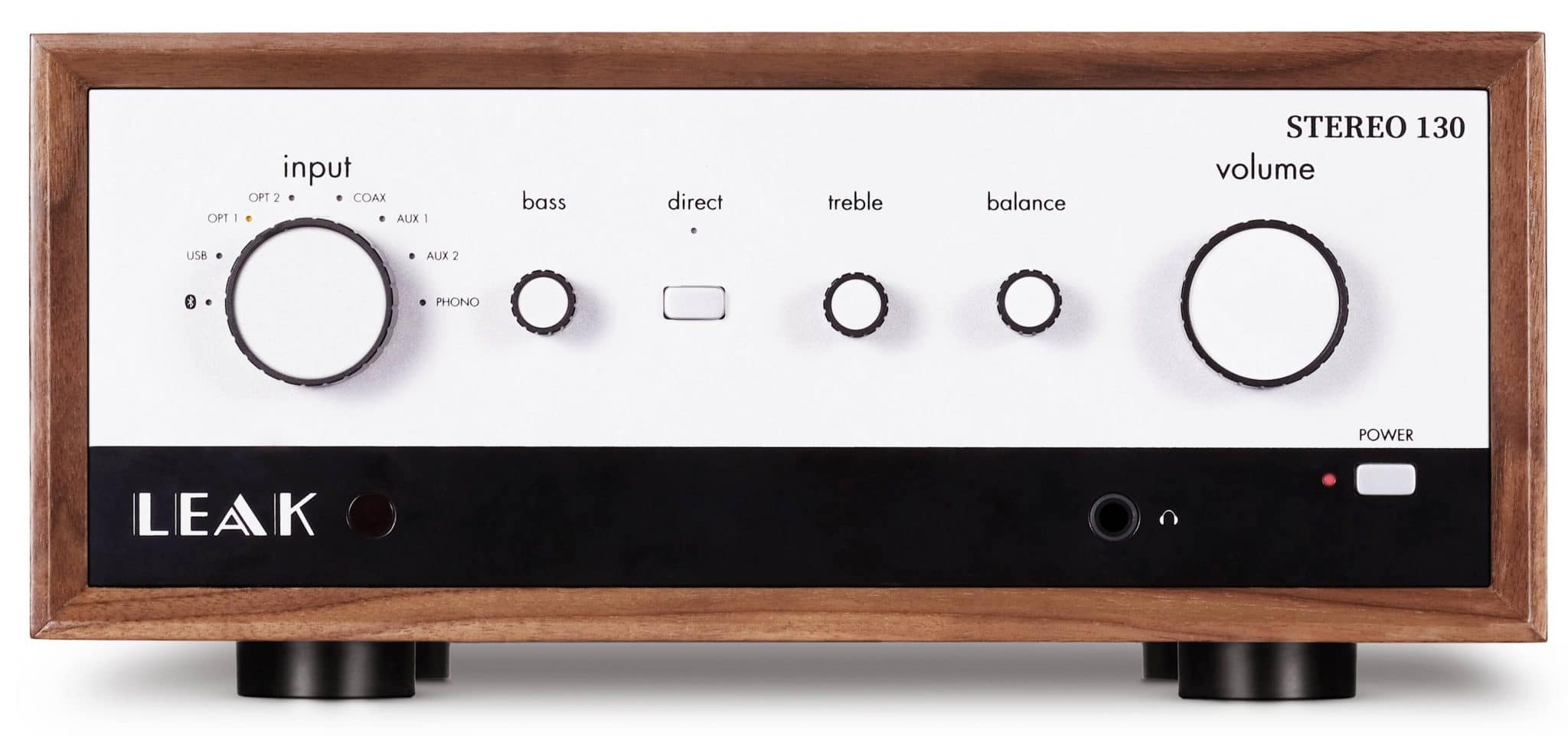
Adopting a compact, boxy design, this retro integrated amplifier design takes more than its name from past glories
Leak is a venerable name in hi-fi. Founded by Harold Joseph Leak, his company was up and running from 1934.
The company produced hi-fi components in the 40s, 50s and 60s and was responsible for a range of technological innovations during that time. It’s valve-based amplifiers were highly regarded and remain legendary and are still sonically desirable for those collectors with an eye for vintage gear.
Even Jimi Hendrix had one. You can see him here with an original Stereo 30 model (below).
Unless this one is strictly posed and nothing else, I reckon ol’Jimi is tweaking the Balance knob in this shot. At a guess, I think he’s added a bit of right channel there. Maybe that’s where his guitar solo is (early stereo, vocals on the left, guitars on the right and all that). “‘Scuse me, while I twist the balance knob <cue guitar break>,” said Jimi. Possibly.
And just like Jimi (he says, desperately trying to bask in the reflected glow) I myself have been on the verge of buying a modded Troughline tuner for I-don’t-know-how-long. Basically because it was seen as the best tuner that had ever been made. And that title still remains, in many eyes.
Leak stopped being an independent concern in 1969 when it was sold to the UK’s Rank Organisation (which itself was sold in 1997 to Carlton Communications). After that, Leak leaked away to a state of relative obscurity. The man himself sadly died in 1989.
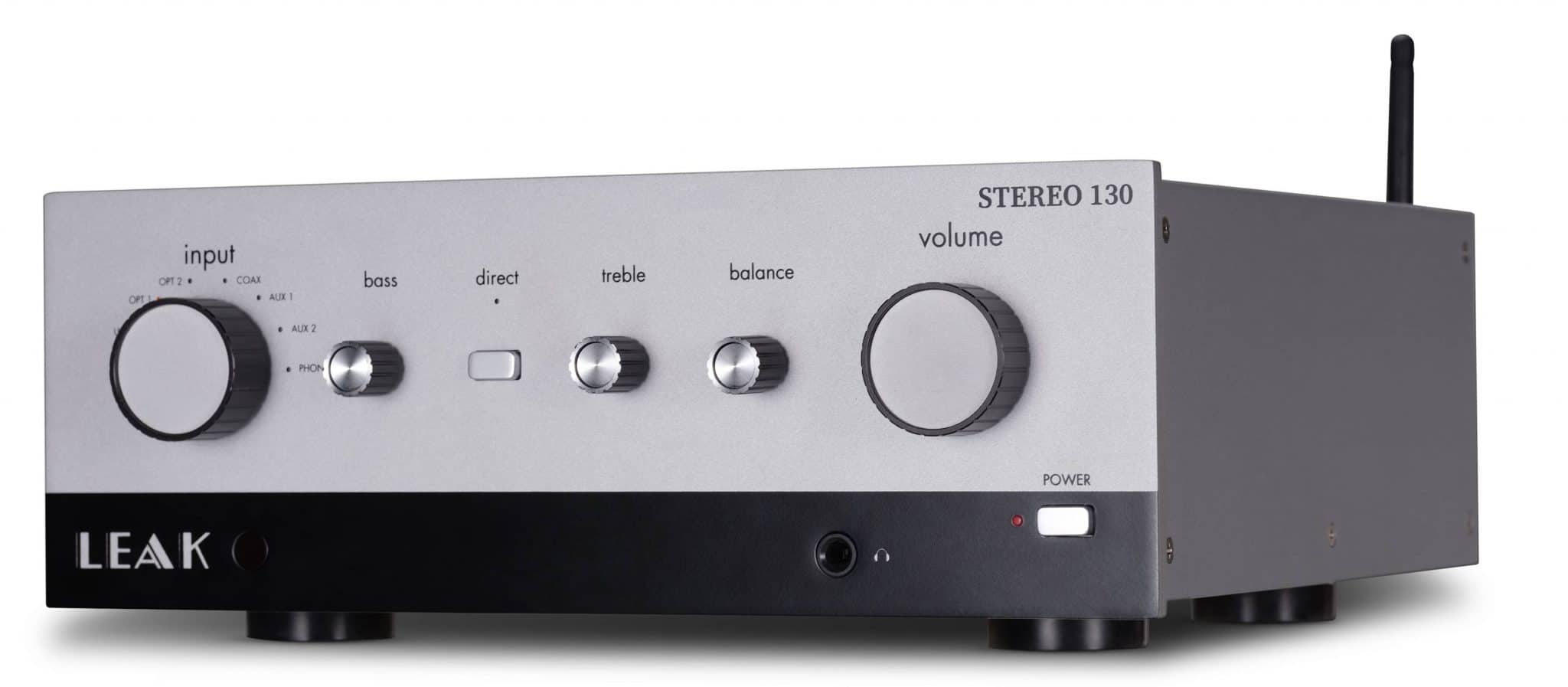
Leak hi-fi hasn’t been on the shelf for, apparently “over 40 years” (I honestly thought it was longer) but now it’s back but as a badge and an aesthetic only. Nothing more than that. Don’t expect the original team to have got back together in their dotage or the glow of valves peeping out of cooling slots or any of that. It’s not happening. Especially at this price point.
NO VALVES?
Does that disappoint me? The lack of valves et al? Of course it does. When I first heard that Leak was active as a hi-fi player again I immediately had the same romantic thoughts you probably had.
But again, the price point. It’s not going to happen at the current retail price position. Triple the price or, possibly better still, multiply the price by 10 and you might be talking Leak of old (especially if a new valve-based Leak amp could be voiced towards the classic sound).
Instead, despite the nostalgic pining, what you’ve got instead is a retro chassis filled with the guts of shiny new technologies and popping with contemporary sockets.
The style the Stereo 130 is inspired (not copied) from the classic transistor-based Stereo 30 and arrives either exposing its shame, bereft of woodgrain or with an optional walnut enclosure to give it 60s respectability. The latter was wrapped around my review sample.
Inside you’ll find a JFET-based MM phono amplifier line-level inputs and optical, coaxial and asynchronous USB digital connections.
THE FRONT
Starting at the front we are faced with a multitude of rotary controls. Starting at the left, you will find a rotary input selector (we’ll go through those in a moment) plus a set of rotary tone controls (i.e. bass, treble and balance). You can bypass these controls via a rectangular Direct button that sits within them. Engaging this button, the sonic change is relatively subtle but I would say that when not engaged, the sound is pretty dry and one-dimensional. It opens up when engaged.
A larger volume rotary knob sits on the right. Below this silver-backed area is a full-size socket for the built-in headphone amplifier and a rectangular ‘power’ (actually a standby) button with a red power light.
Incidentally, although the Input, Direct and Volume controls can be altered by the remote, the tone controls cannot. Also, the Volume knob is the only knob on the front fascia that is motorised. The Input knob lights do change when selected but the Input knob doesn’t move.
THE REAR
Flipping to the rear, on the left we have a Ground screw that sits above and accompanies the built-in phono amplifier. On the same bank are two sets of inputs and a pair of pre outs. I would have like to have seen more input options here but perhaps I’m just being greedy.
To the upper right of those is the speaker connection quadrant. Moving down again and to the right of those are a pair of trigger ports to allow you to control the system via a remote which is, bar a button change or two, almost exactly the same as the remote offered by the Audiolab 6000A integrated amplifier.
To the right of that are inputs and outputs for the built-in DAC. That means an optical and coax for your outs and a coax, two opticals and a USB Type B to run to a laptop, for example. A Type A connection I include but is devoted to software updates only.
PCM can handle up to 32bit/384kHz and DSD up to 11.2MHz/DSD256 files are supported, via its ES9018K2M Sabre32 Reference DAC chip. You’ll also find aptX Bluetooth, included.
To the right of that lot is a IEC power socket, allowing you to upgrade the supplied kettle lead plus a rocker power switch above.
Closer examination will also reveal a cooling grill inserted underneath the chassis which mirrors another cooling grill that is inserted into the top of the chassis.
The Class AB amplifier, pushing through 45W into 8 Ohms, features a toroidal transformer. Spanning 302 x 118 x 270 without the wooden cabinet outer or 326 x 146 x 276 with the outer frame in place and weighing in at 7kg (without frame) and 8.3kg (with) the finishes toggle between silver and walnut, depending if you have that frame in place.
SOUND QUALITY
I began with CD and jazz from Geoff Keezer on piano accompanied by sax and upright bass playing Madame Grenouille on the 1997 album, Turn Up the Quiet.
Listening to the Leak amplifier over a broad canvas, I was happy to report that the frequency discipline from the 130 was high. There were no nasties here. That is, the mids were never bright or barking. If anything they were on the smooth side, a little restricted in the upper mids perhaps to give the midrange a slight warming presentation. Nothing too extreme, I hasten to add, but there was a nostalgic glow that befitted its heritage, methinks.
Alongside that, the treble offered a similar personality, just rolling off the extended tip a little. Keezer, at one point, moved his hands from the piano keys, reached inside the piano itself and caressed the strings inside. It was at this point that you could hear all of the detail here. I never felt that the essential information was lacking. I could have asked for more, that’s true, but the available treble still provided a good supply of information.
The lower frequencies were similarly corralled in terms of discipline. There was no blooming here which I appreciated. The 130 provided a strong bass that was slightly warm and 70s like, with a golden glow to the lower end.
The overall effect from the soundstage leaned towards a nostalgic valve presentation. That’s what I hear here. The Stereo 130 is voiced to have that slight 60s and 70s-era tone. It strokes music until it purrs. There’s no aggression here. No attack. No aggressive edges. If I was being specific, at this early stage, I’d say that the Stereo 130 is aimed at people who are into Led Zeppelin and Fairport Convention, Joni Mitchell and Neil Young, T.Rex and The Faces.
I’ll test out my music theory and character with vintage, 70s-era Jethro Tull on vinyl in a moment, though.
After the Stereo 130 had been around for a while, I began to hear rumours that this amplifier was nothing but an Audiolab 6000A amplifier in new clothes. Maybe that copycat remote control fuelled those rumours.
Actually, the rumours are false. If there’s any relationship going on, its not with the Audiolab 6000A, it’s with the Quad Vena II
For now? Comparing the 130 to the Audiolab 6000A, the latter sounded more modern, brisk and neutral. The 6000A was strong in bass but only enough to provide a tonal balance but pulled back from the 130’s touch of bass emphasis. The Leak liked to cuddle you in a blanket of warming bass. The 6000A offered slightly better precision and accuracy in the upper mids alongside a slightly extended dynamic range.
Hence, the reverb tails on those piano string effects I mentioned earlier extended further via the 6000A and did so with greater focus.
I say all of this with a caveat. If you hear the 130 in isolation, you may not hear these distinctions or, at least, the distinctions might not be so great or as profound. I had to do a strict A-B series of tests to hear them. This is the conceit of the hi-fi journalist, of course. Nevertheless, the differences do exist.
70S’ GOODNESS
I then turned to the original pressing of Living in the Past from Jethro Tull via Chrysalis in 1972. And yep, sure enough, the Tull track slotted into the Leak’s personality very nicely indeed. The 70s mastering from this album was a perfect fit, allowing the music to flow very smoothly indeed with a perfectly balanced approach to this classic prog outing.
Vocals were full of emotive detail and texture, bass guitar provided a useful foundation to the music as a whole, drums were solid, weighty, providing a forward motion to the song but was never overly aggressive while the lead guitar was quite delicious in its complexity.
In fact, vinyl as a format worked very well with this amplifier. Playing selections from Kraftwerk and The Selector’s 70s neo-ska sounds, I found the playback immensely appealing.
Turning to the built-in phono amp and, much like the offering in the 6000A, I found it fine, not amazing but certainly workable and usable if you are short on cash after buying your new amplifier. I would still recommend an upgrade to a superior external model when possible, though.
Next up was the built-in DAC. I continued with Geof Keezer via my 6000CDT transport but this time plugged it directly to the Leak’s internal DAC and listened to that.
This interested me because moving from an external DAC to the internal DAC of the 6000A, even though the latter internal DAC was very good indeed, still resulted in are claustrophobia around the mids, slightly podgy bass and more noise in the upper mids providing angular notes. That is thematic sounded a tad more jaggy. Again, in broad terms, the 6000A’s internal DAC sounded very nice indeed but you could easily hear the difference compared to an external DAC model.
The same sonic effect could be heard via the Leak Stereo 130’s internal DAC but, because the 130 began from an ever-so slightly warming position, the move to a slightly lit midrange actually added a more modern balance to the overall presentation. Yes, the standard reduction in midrange air and space around the soundstage was a giveaway but the Leak’s internal DAC suited this jazz track very well indeed, considering.
The piano on this track was satisfyingly resonant. Piano had a rich, even fruity tonal response. The resonance was think and rich in its response while the sax had a complexity in its reedy nature. Upright bass, meanwhile was thick and weighty. You really felt you were getting your money’s worth in musical terms. Each instrument felt like they were putting effort in entertaining you.
I tried the built-in headphone amplifier via a pair of Sennheiser 660S phones and found the bass playback a little claustrophobic while the upper mids were rather rolled off. This was the least impressive aspect of the amplifier. It’s fine to get you going but I’d recommend an external model when you can.
Bluetooth was pretty impressive, though. I was surprised how good it sounded via the Stereo 130. Instrumental separation was very good indeed, helped by an infusion of air and space in the soundstage while subtle effects like the reverb from a plucked acoustic guitar could be heard. No mean feat for a lossy streaming file. Kylie Minogue’s All The Lovers, as you ask. I was also impressed at the broad sweep of the soundstage. Being a lost file, the missing musical information did reveal hard edges and bright spots but the Leak gave it a real go. So thumbs up here.
CONCLUSION
As a reviewer, it would be easy to swiftly put the boot in, slap it around the face and castigate it for not being strictly neutral and not pushing the dynamic reach but I’m not about to do that because the Stereo 130 never irritated me. I could quibble about clarity and information loss at the dynamic extremes but, overall? I enjoyed the musical experience from the Stereo 130. To some extent, the tonal presentation of any piece of hi-fi is not quite as important as your personal response to that component.
So, inherently, my sonic preference is one of balance and neutrality yet the Leak’s slightly warming approach never irritated me, never rubbed me up the wrong way. Is that because I fit the Leak demographic, perhaps?
Frankly, I could easily live with the Stereo 130. I wouldn’t use it as a reviewing tool, it’s too coloured. But, off duty, I could easily see myself whiling away the evenings and weekends with this box and with a smile on my face.
In fact, I had a great time with my Leak amplifier. Something I reckon I shared with my good friend, Jimi Hendrix. Or Jimbo as I used to playfully call him (oh, how he laughed).
The emphasis towards warmth is relatively subtle. There is warmth across the frequency band but that warmth is not an over-riding issue, it never really gets in the way and never becomes a problem.
It actually gives you a superb option if you’ve ever considered buying a 6000A, for example. If you’ve ever thought, “Yea, I like the 6000A but I would prefer a touch more bass weight, more of a valve-like glow around the mids and a 70s tone to the music.” Well, Leak offers you just that option now with the Stereo 130. And I like the fact that there even is an option.
Music is all about choice and hi-fi should be the same. I don’t want hi-fi components to sound like clones of each other. We are all different. We all have different ears and tonal preferences. The Leak Stereo 130 has bags of character and certainly offers you a definite sonic choice but it does so while retaining frequency discipline. It’s well behaved.
I thoroughly enjoyed my time with the Stereo 130. I think you will too.
LEAK STEREO 130 INTEGRATED AMPLIFIER
Price: £699 (Silver) or £799 (Wood Enclosure)
Website: www.leak.co.uk
GOOD: compact design, retro styling, accompanying sonic character, easy to use, feature set
BAD: inputs, upper mid roll off, bass emphasis
RATING: 8
[Don’t forget to check out my new Patreon Page at www.patreon.com/audiophileman, for exclusive videos, giveaways and more!]
REFERENCE
Tellurium Q cabling
Blue Horizon Professional Rack System
Harmonic Resolution Systems Noise Reduction Components

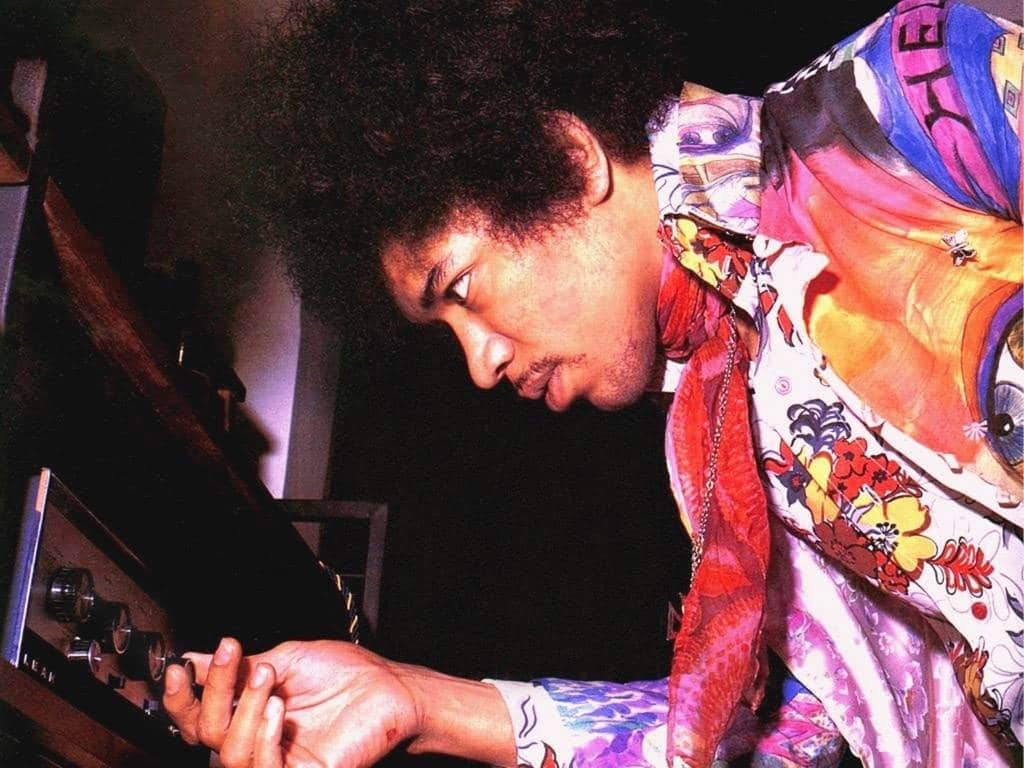
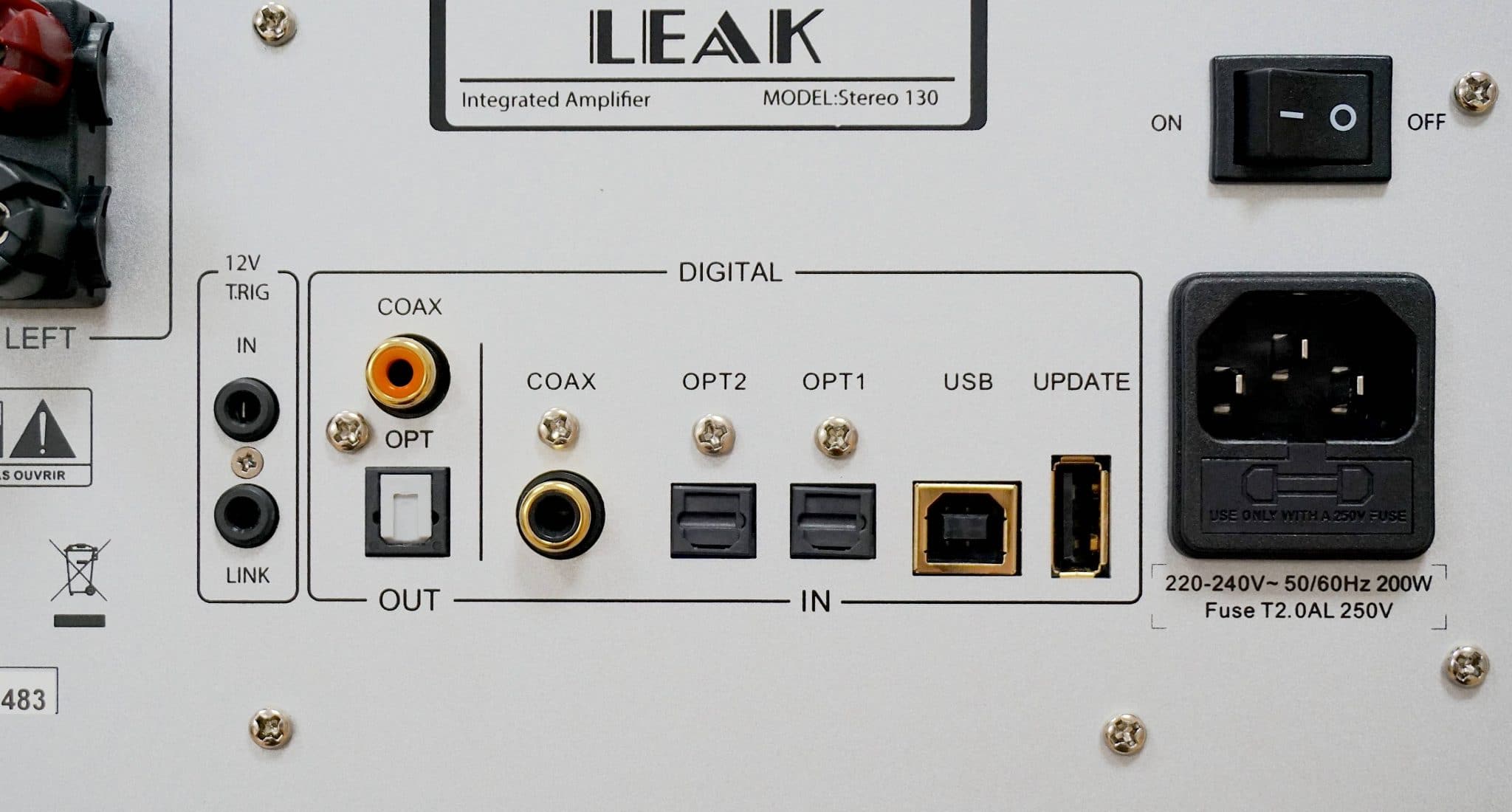
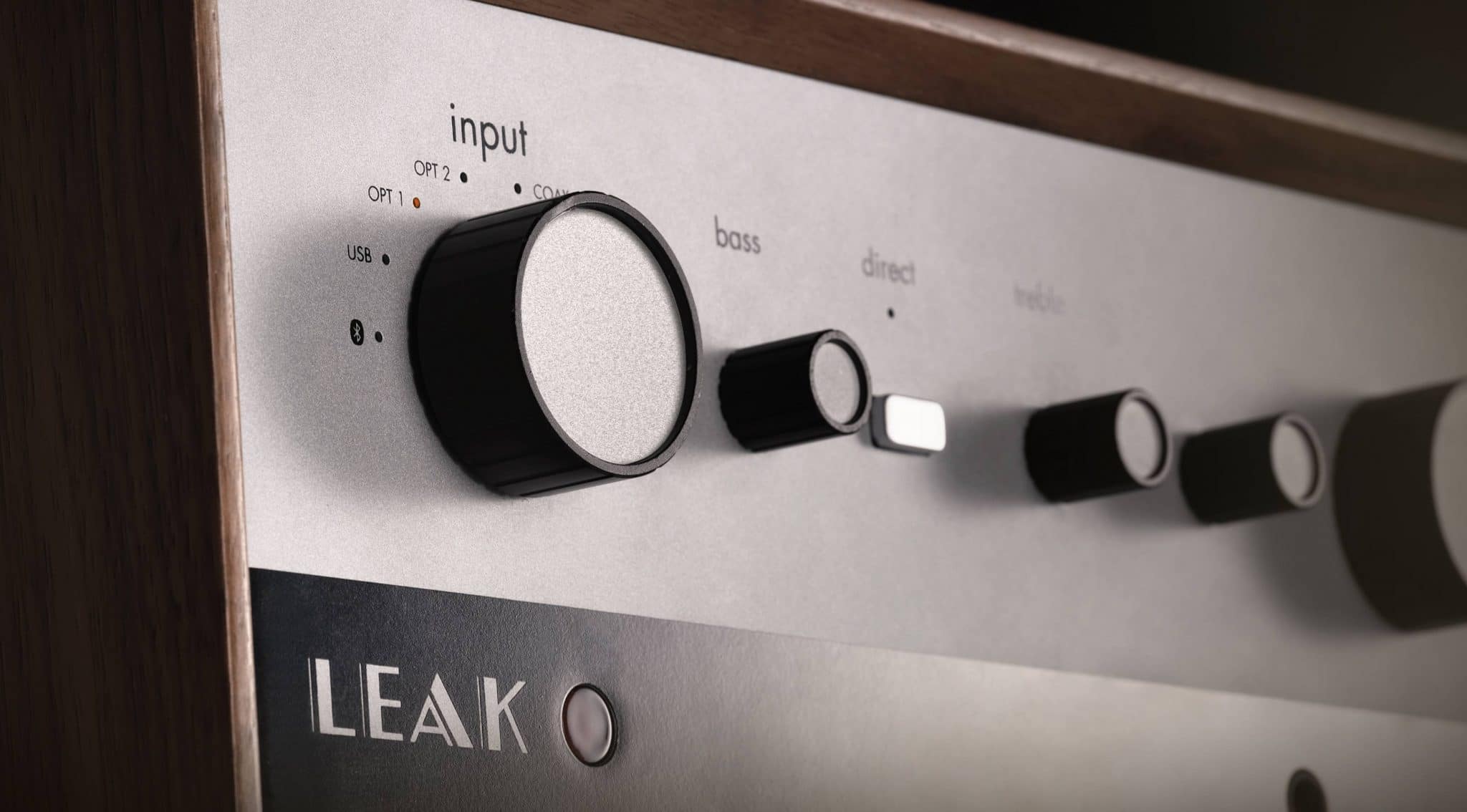
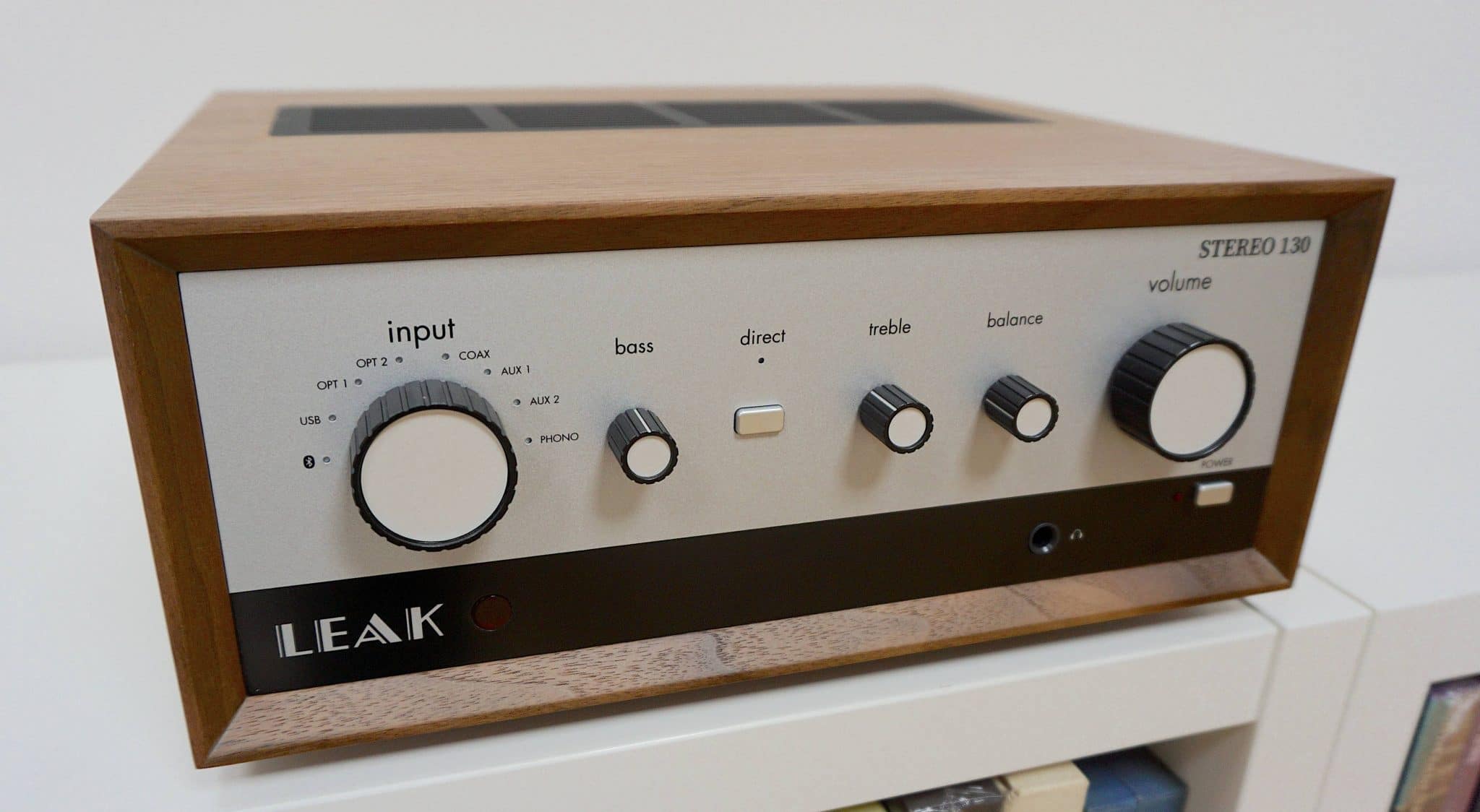
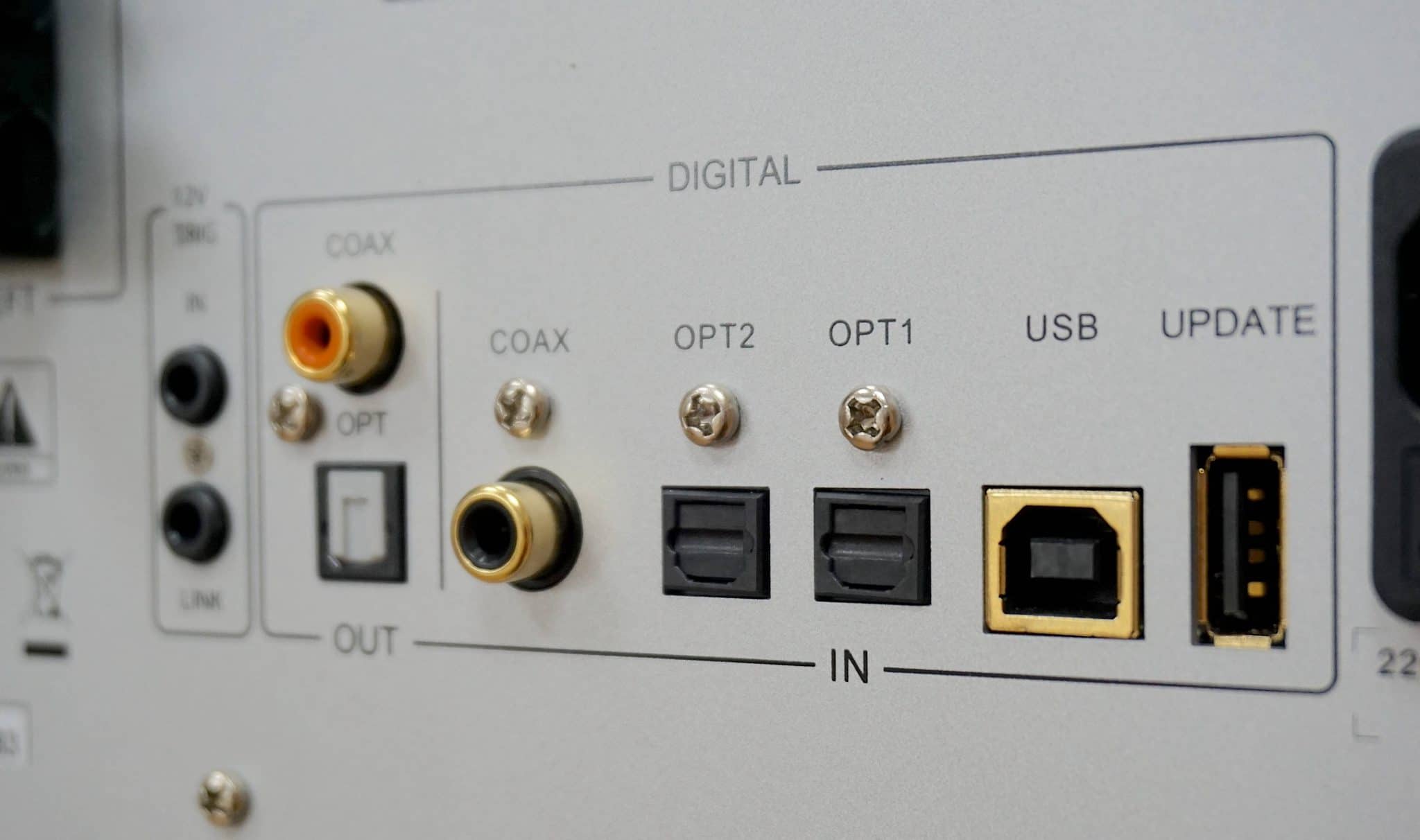
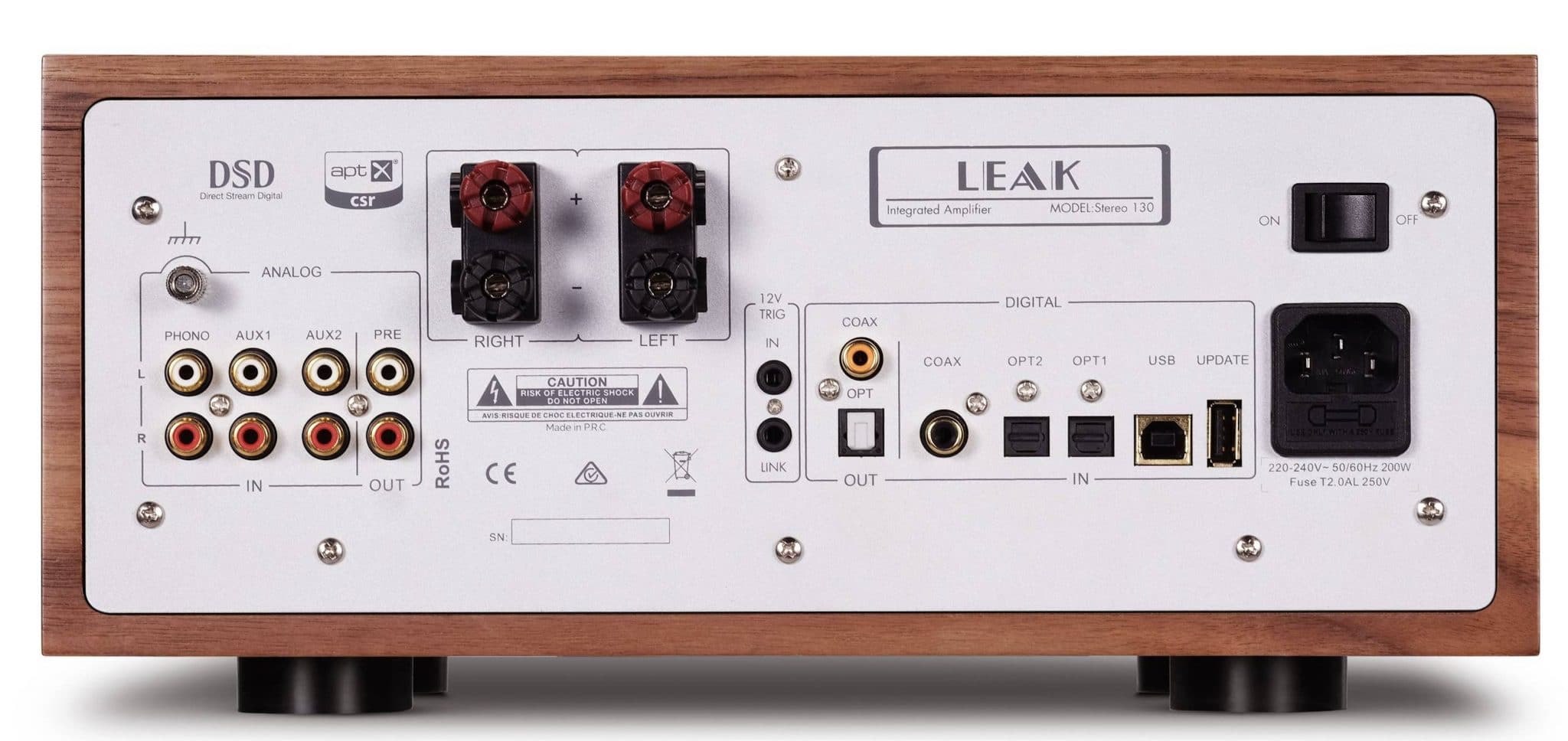
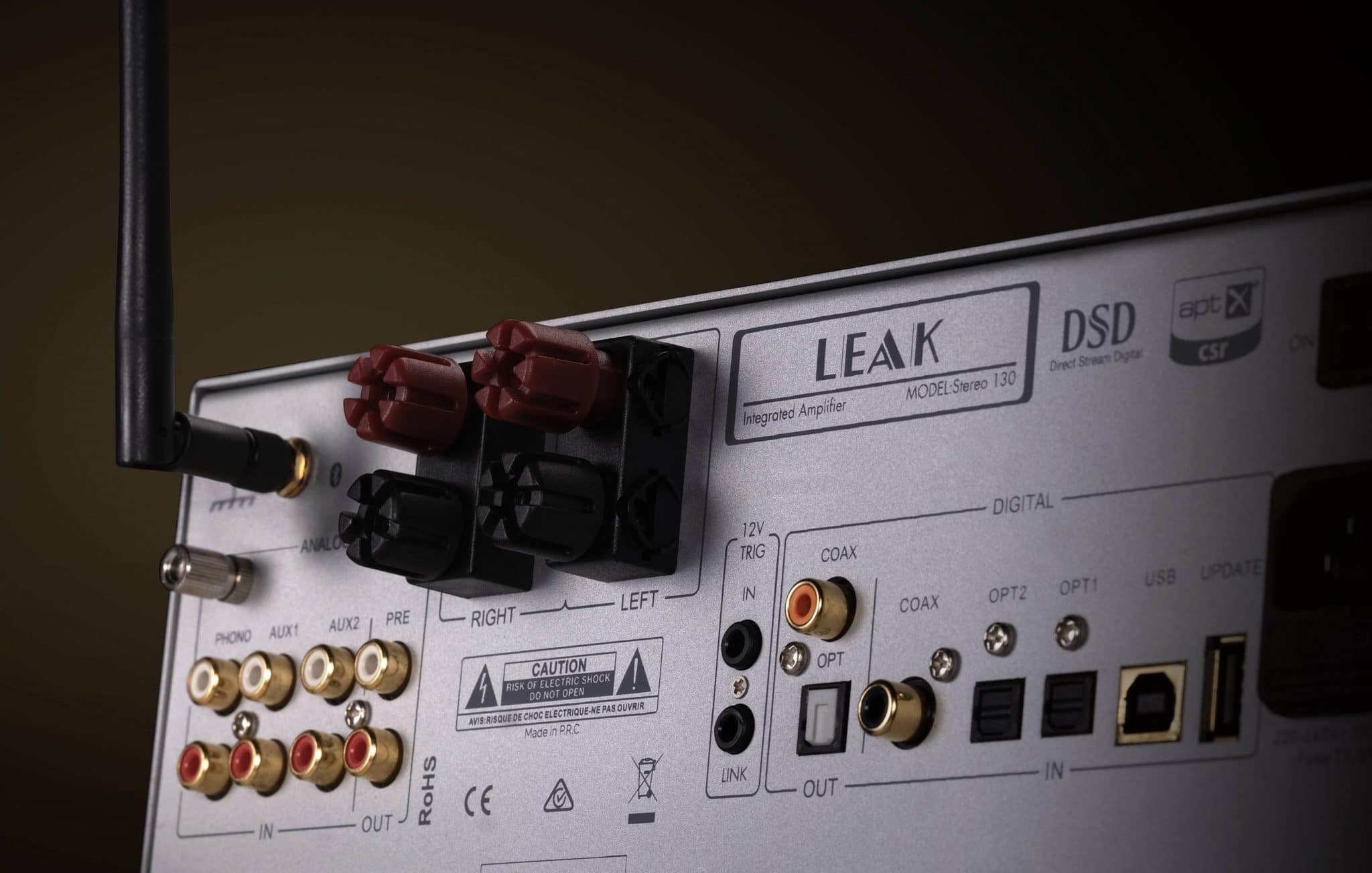
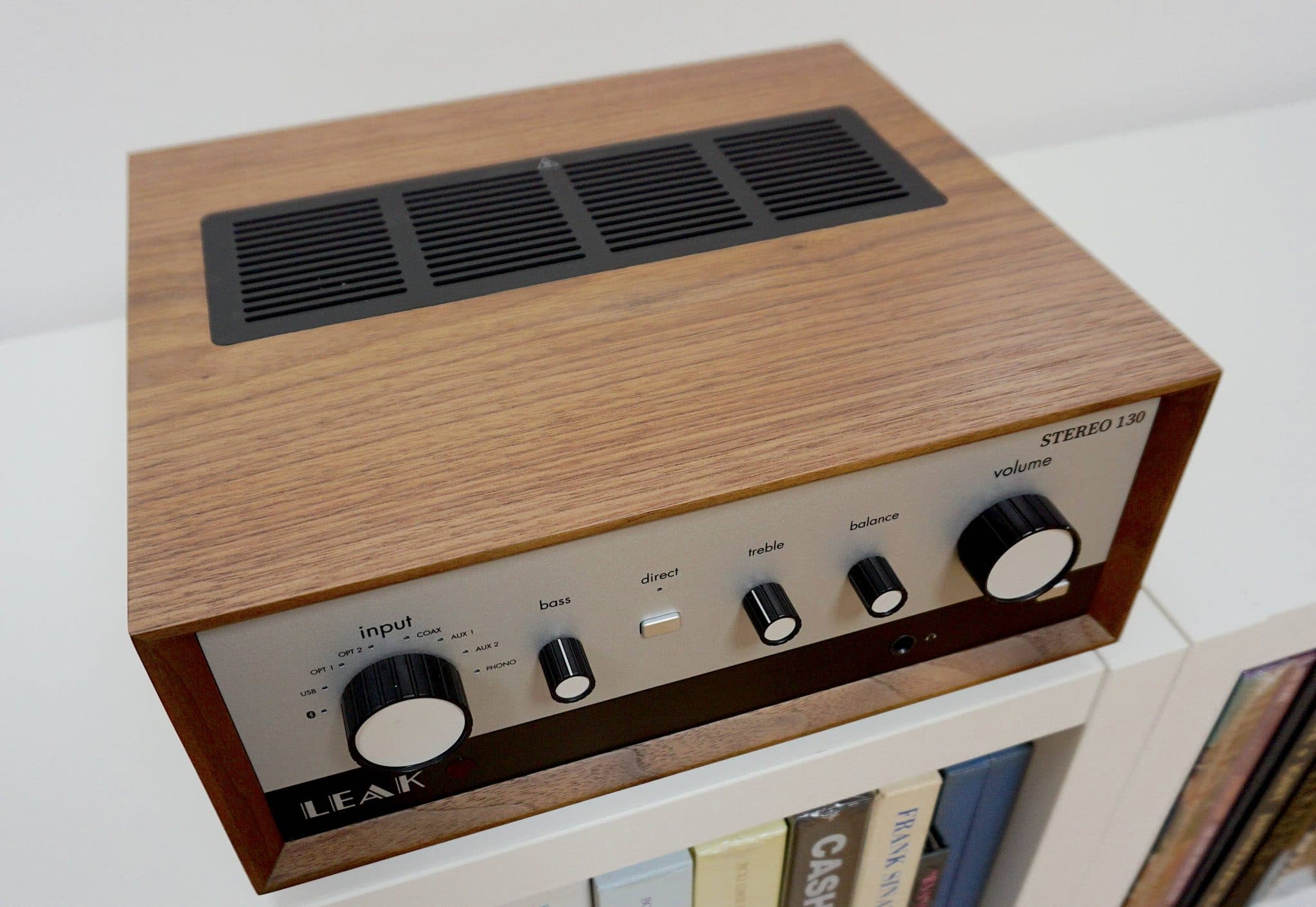
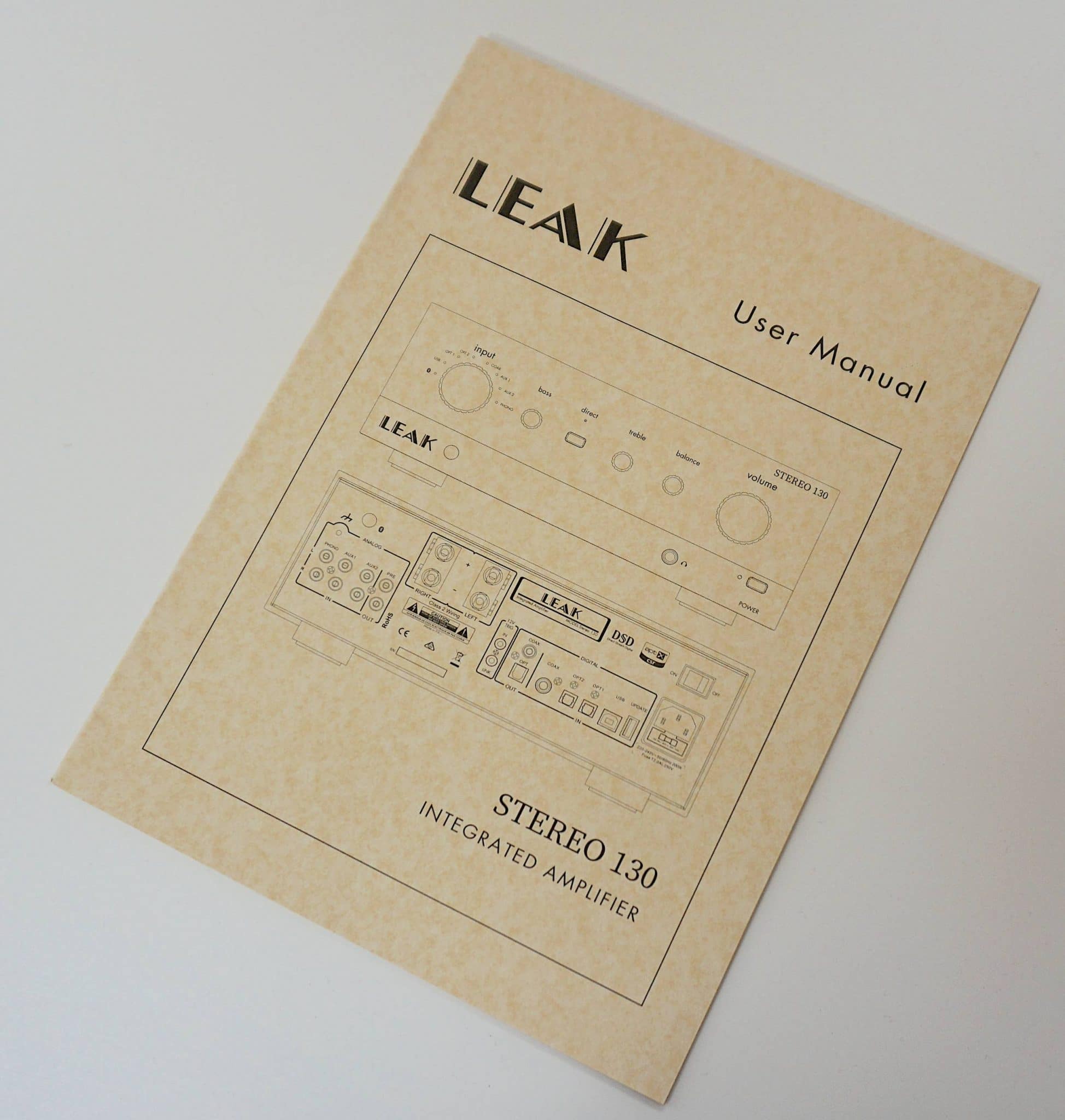
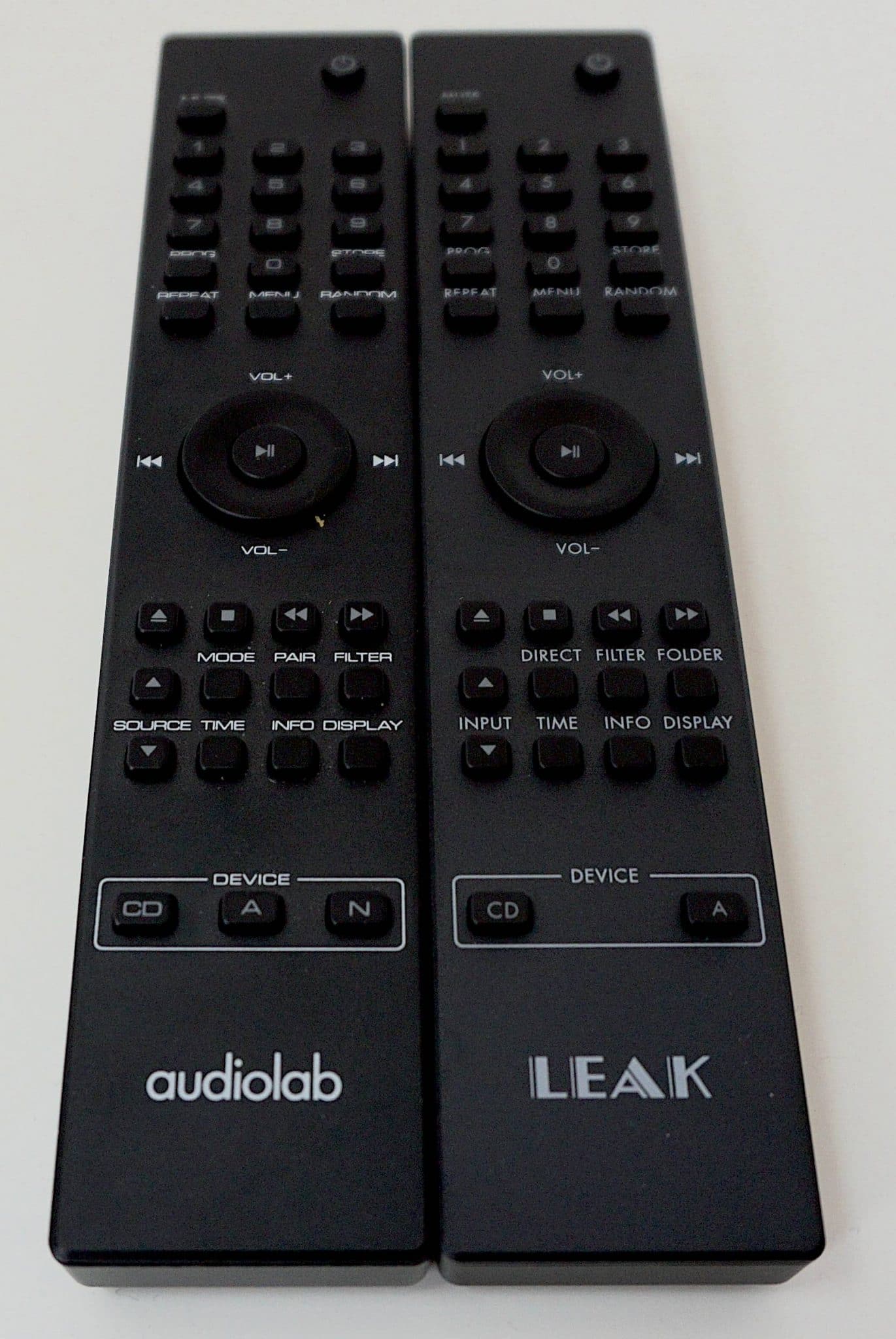
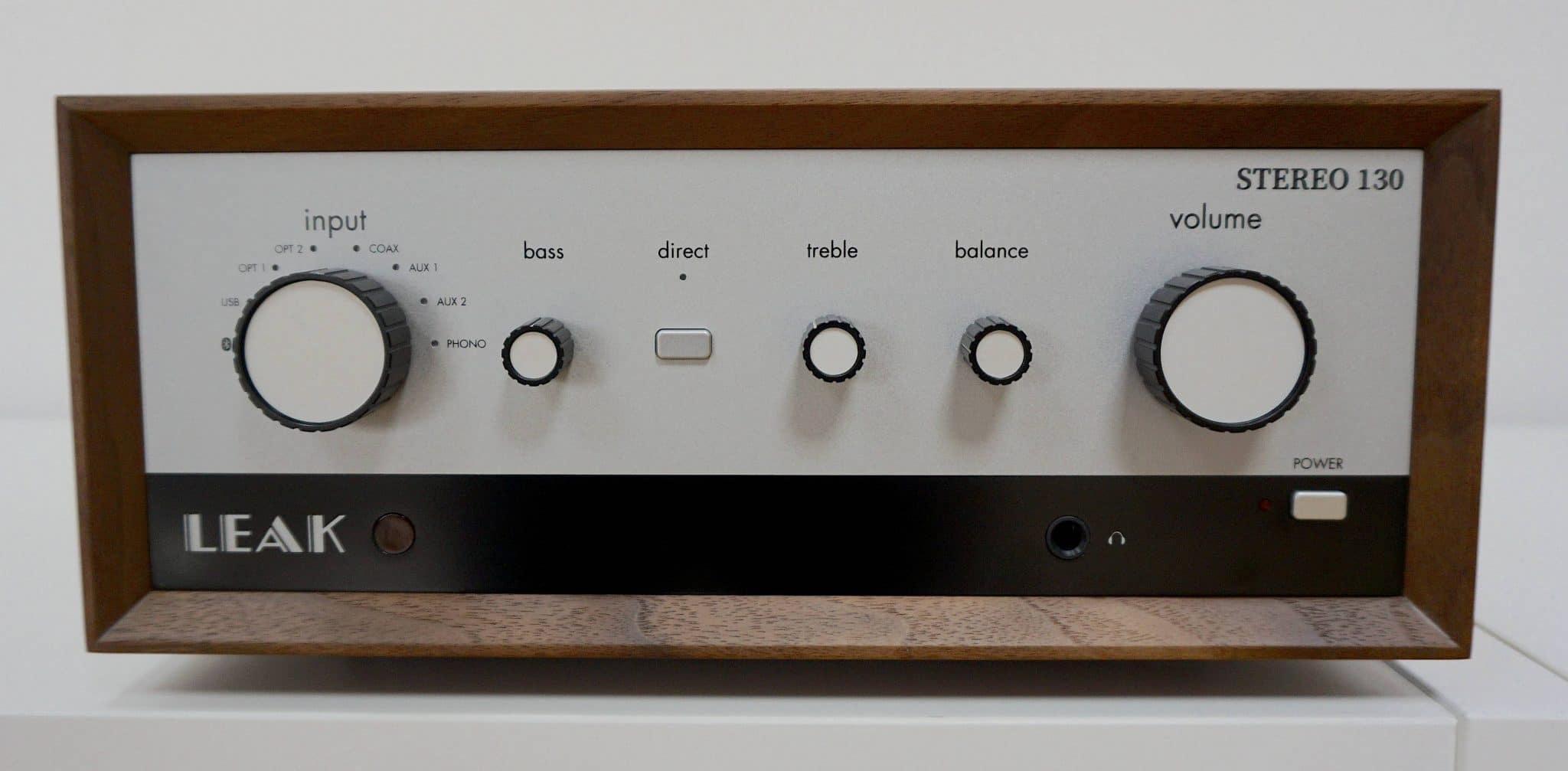
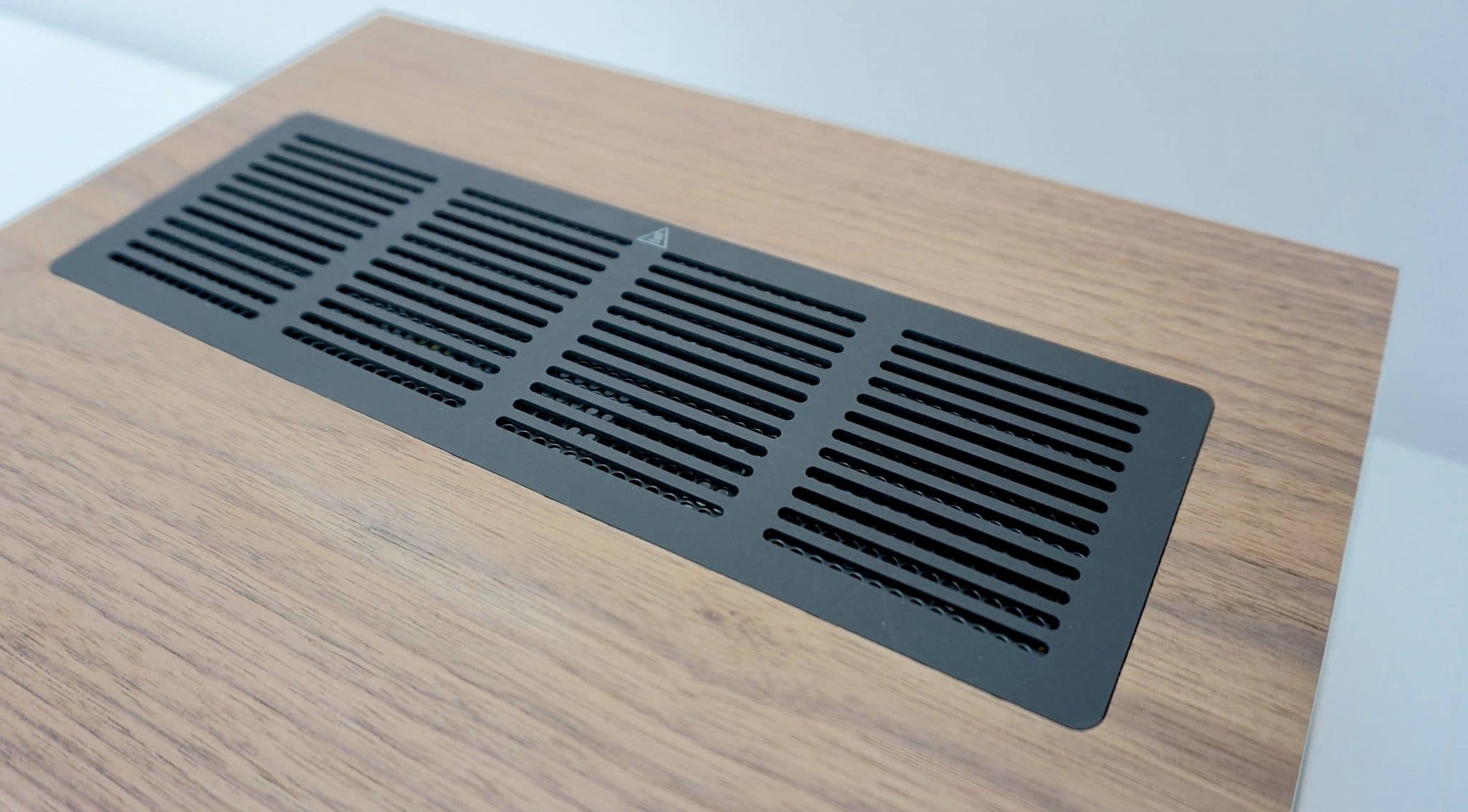
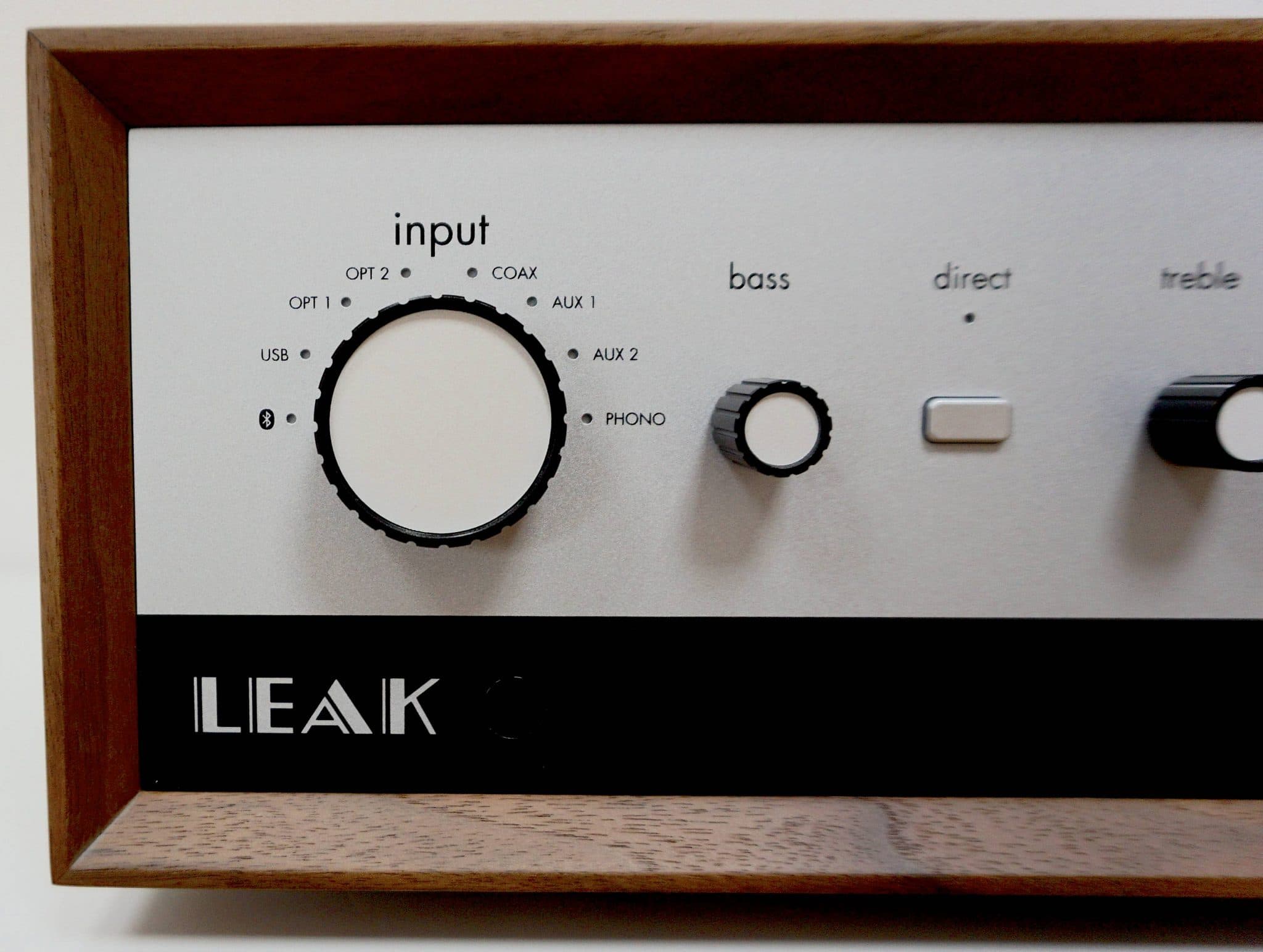
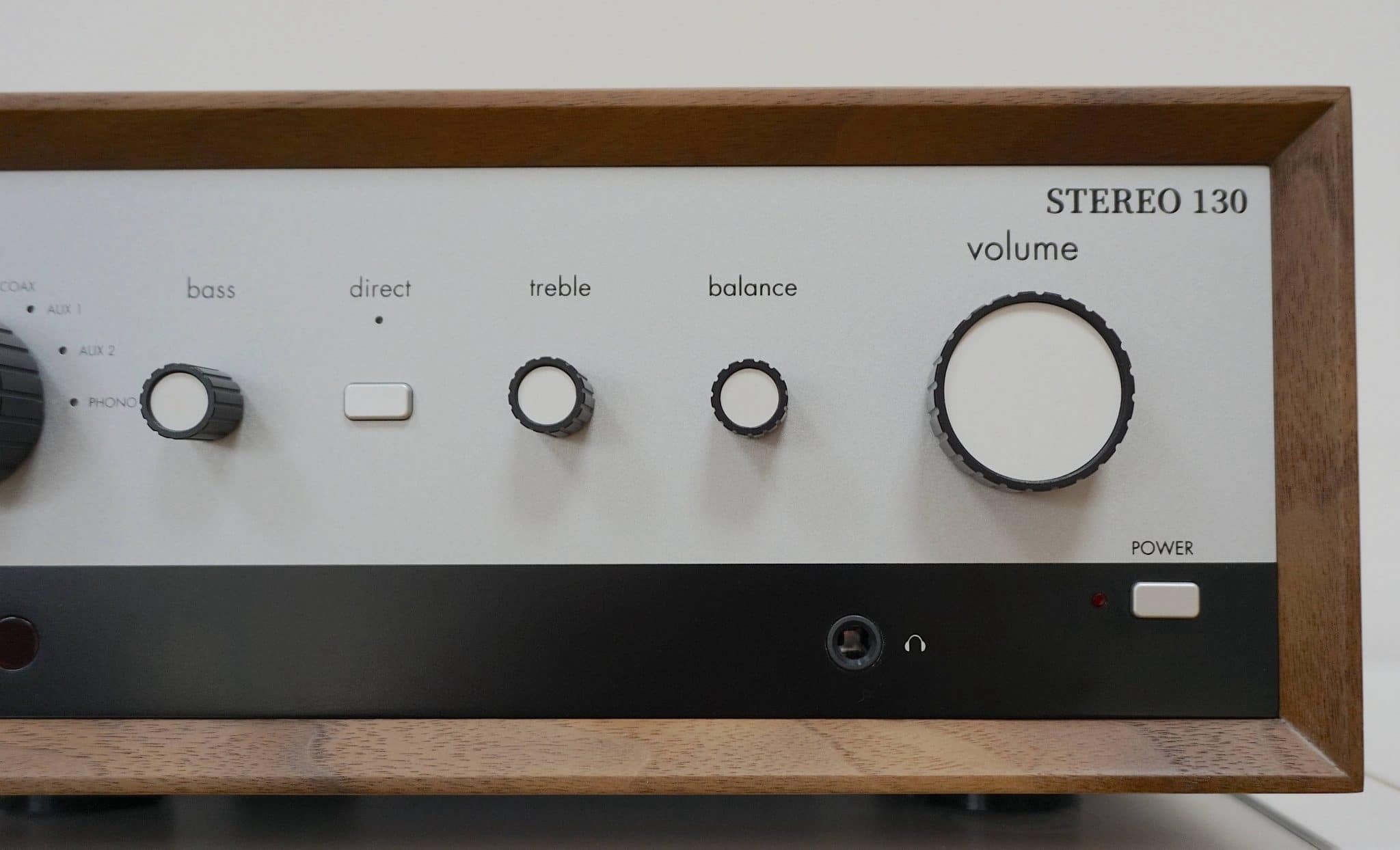
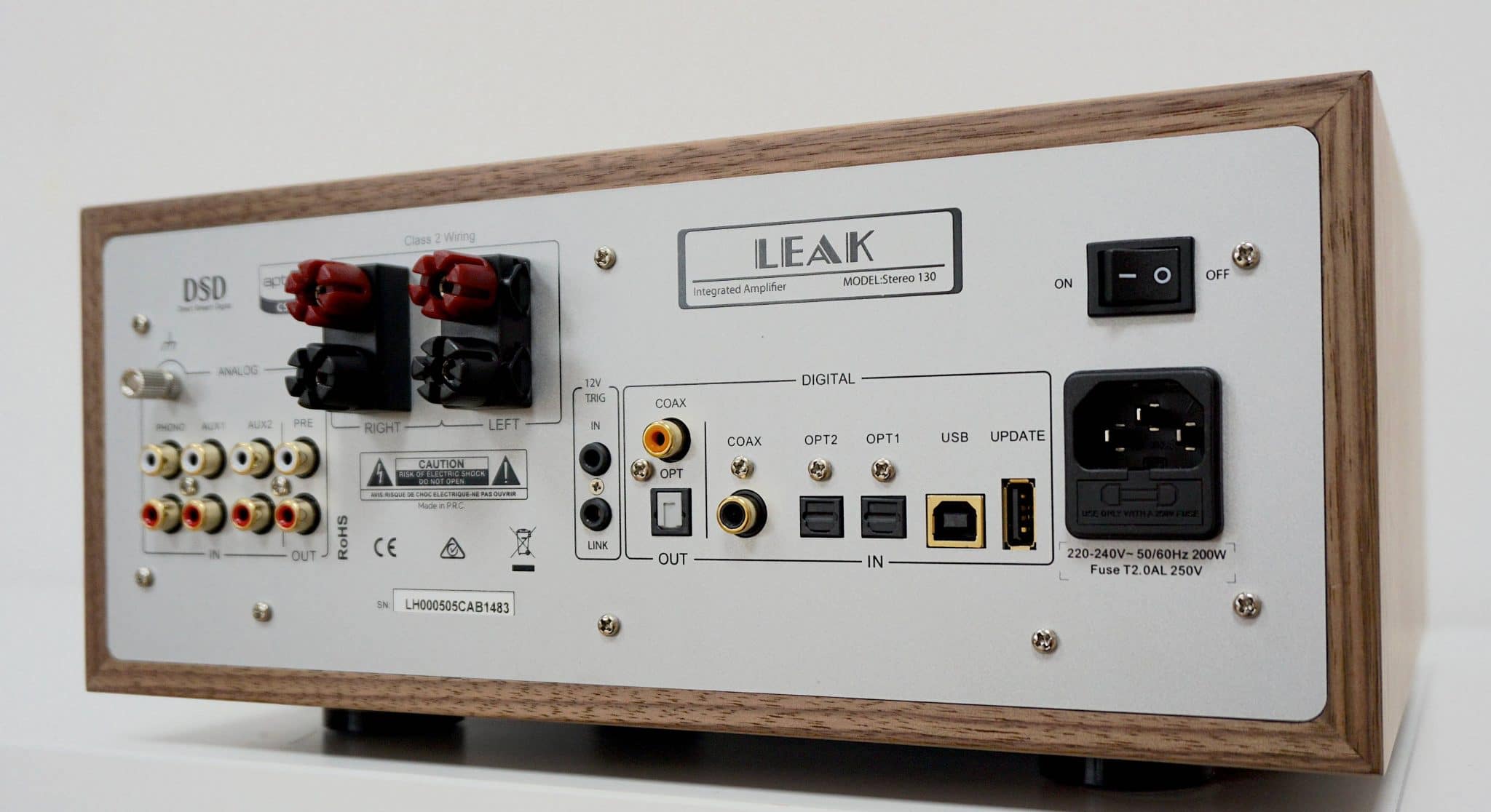
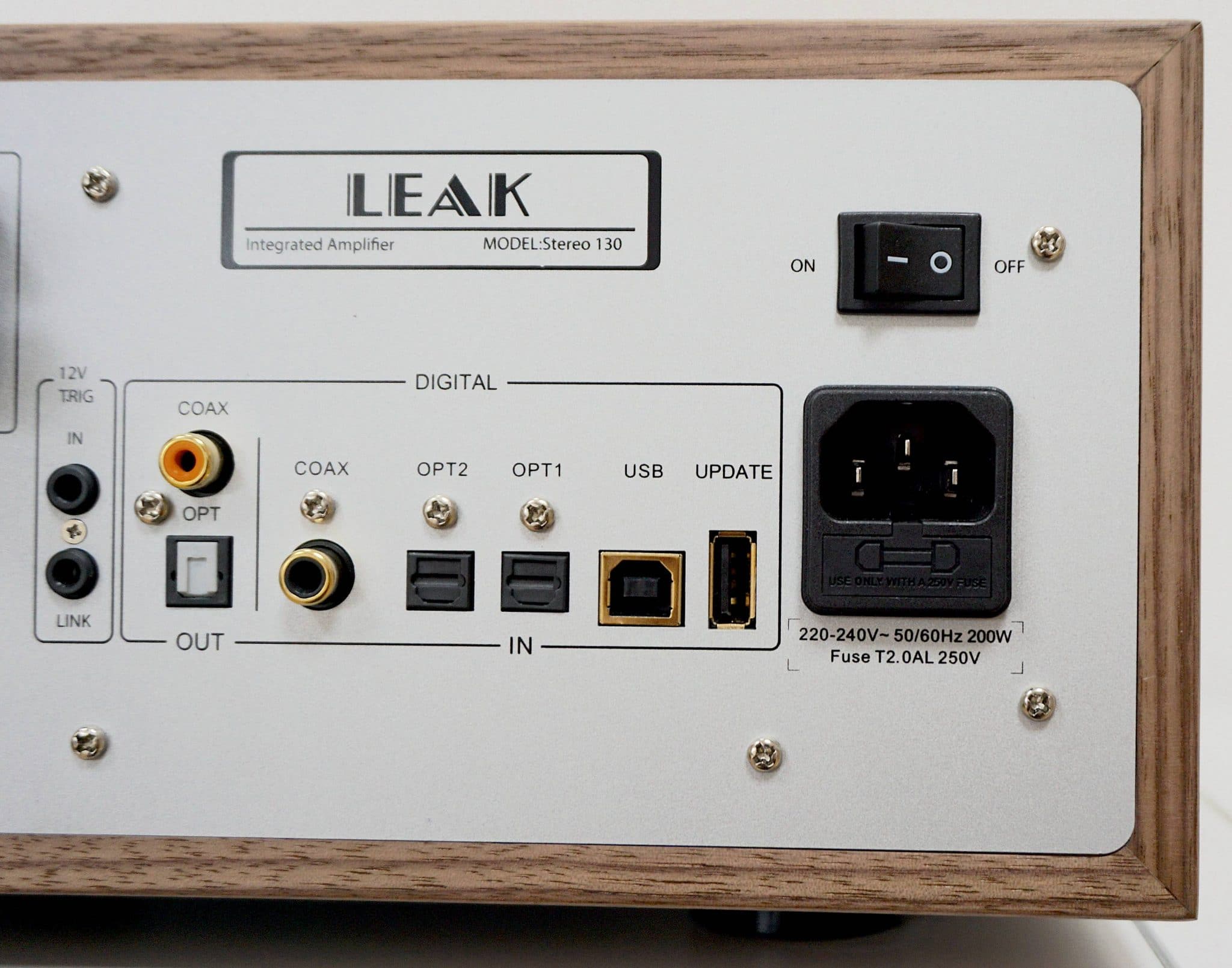
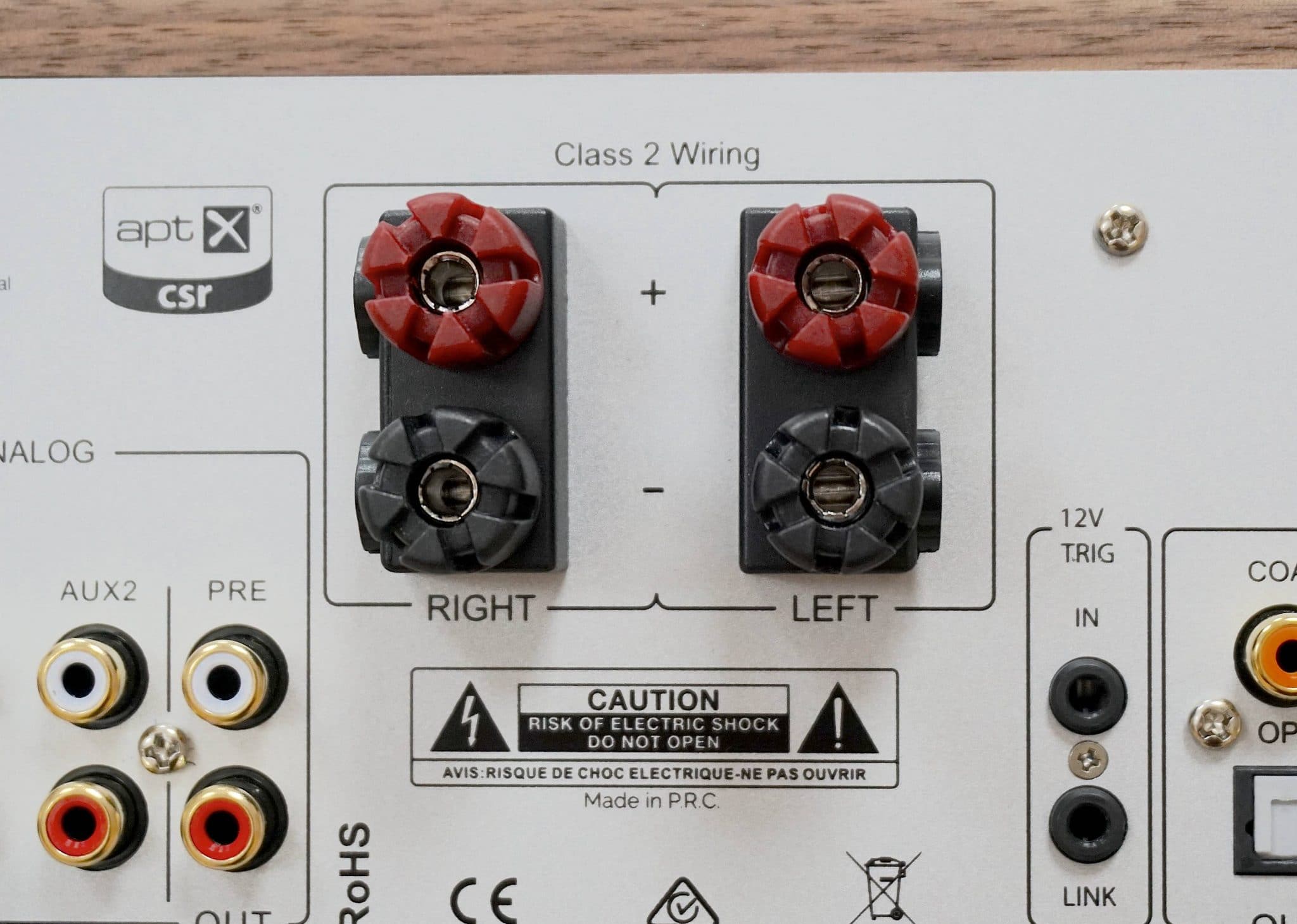
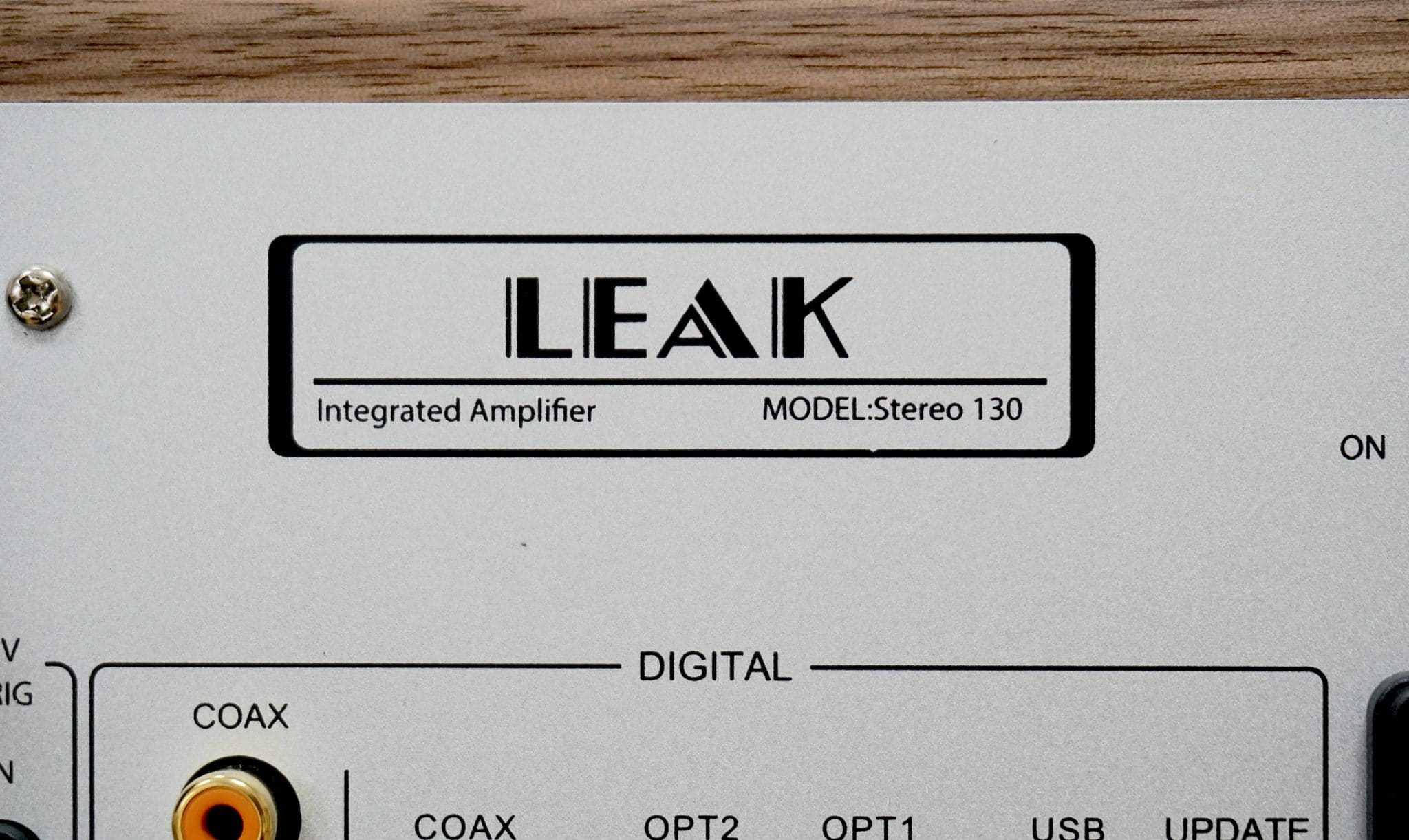
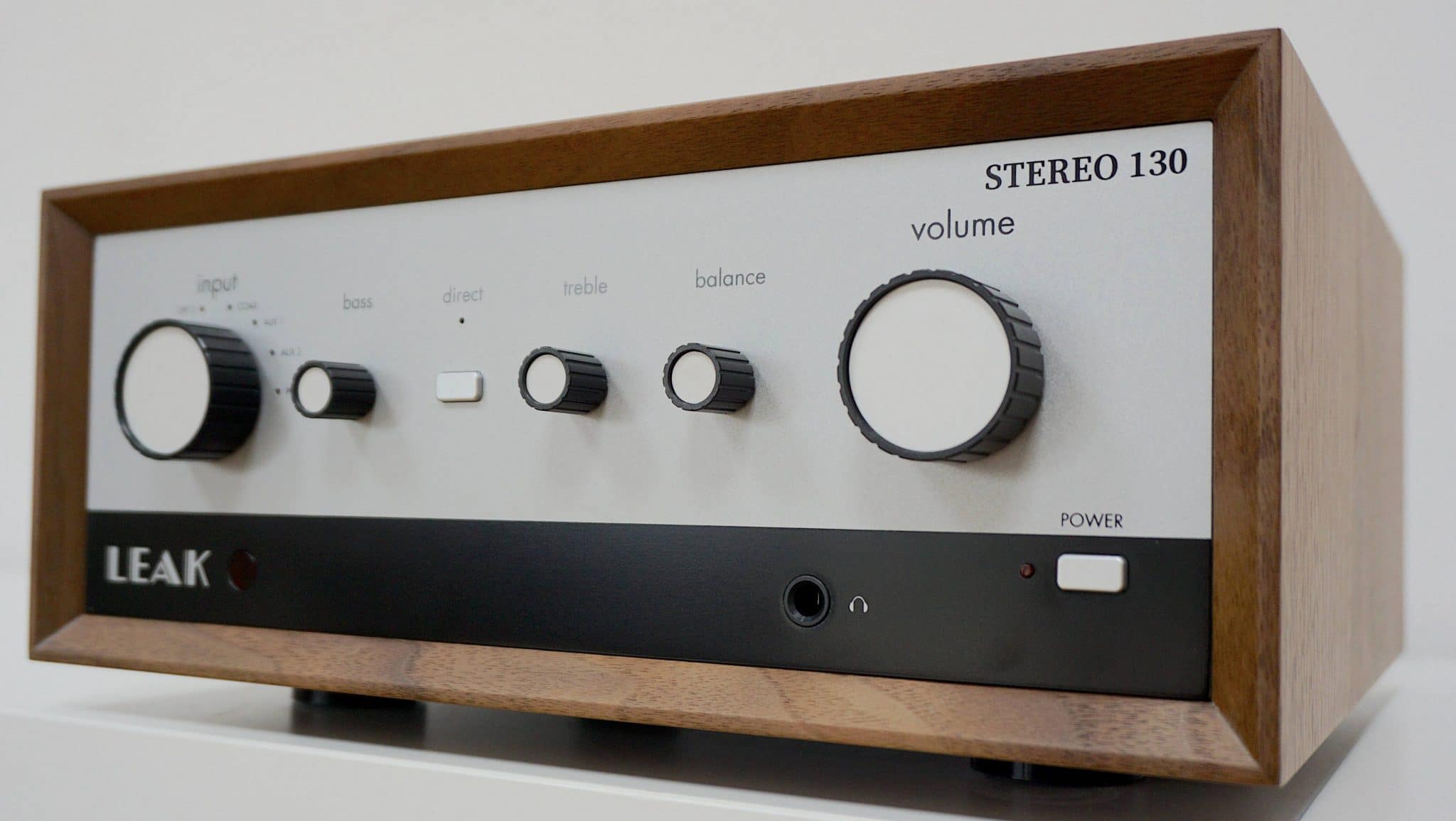



Fantastic review, thank you. I’ve just reserved a pair of Wharfedale Lintons. Im considering this Leak amp, Audiolab 6000A, and the Quad Vena 2, Which do you think is the best combo? Im also not averse to the usual suspects in the same price range; Cambridge Audio, Rega, Marantz, et al. Thanks in advance for any help. Keep up the good work.
Hi Paul – check out this review for my comparative thoughts on the Leak and Audiolab. There Quad is recommended too. The Leak is a bit like a Quad and then some I’d say. There’s a host of other excellent amps out there too but the Leak and Audiolab provide you with a good sonic choice, I’d say. That depends on your personal preferences.
It look just like the MISSION 778X (look at the back), how does it do compåared to the mission amp https://www.mission.co.uk/778x/
Hello Paul,
Thank you for your very detailed review.
I am looking to change my old nad c355bee amplifier because it starts to have some channels issues from time to time 🙁
My speakers are monitor audio silver RS8 ( before RX series) which I consider a litlle too harsh with some amplifiers. But with my nad is ok.
Do you consider Leak 130 will be a good match ?
Thank you very much for your answer.
Best regards,
Bogdan
Haven’t heard the speakers myself but I have heard of their edgy high frequency performance. The Leak should control that, yes.
Hi Paul, which cartridge do you recommend for my Leak Stereo130? Goldring 1042 or AT VM740ML? Thank you.
PS: also in anticipation of a future up-grade with MM phono stage.
I’d need more info before I could offer an opinion, Antonio. A budget and a list of the rest of your hifi would be useful.
Rega P25 with RB600, Leak Stereo 130, Cabasse Java MC40, floorstanding, 3 ways, 90 db sensivity, 8 ohm impedance.
Better Goldring 1042 or AT VM740 ML?
For the future phono stage I would like to spend around 500 euros.
Grazie.
I’d go for the Goldring and look at a Moon 110 phono amp or Trichord Dino for your phono amp (either will see you through any future upgrades too).
Hi I’’ve been upgrading my system this last year and the last peace is my amplifier , and have been thinking about the Leak stereo 130 and wounded if it would be a good replacement choice and match for my system. Its just for vinyl . New TT РREGA P6 / Speakers- Focal Aria 906 speakers and have A project DS 2 Preamp , my old amplifier that I’am replacing is Mission Cyrus one and it’s over 30 years old now . I’d like your view on if this is a good choice before I go demo one. Look forward to your reply. Anthony
The fact you’re talking about a demo is a great thing so all should be revealed then. From my perspective, if you like the notion of the Leak’s warming presentation approach then you should be in for a treat.
Thank you Paul for such detailed review; I enjoyed it very much. I’m looking to buy a good integrated amplifier and I found the Audiolab 6000 A very thin-sounding, bass lacks punch and weight. The 2 options that I’ve been considering are the Stereo 130 and the Cyrus One (which you’ve reviewed as well). Which one would you recommend for a fuller and rounder sound?
If you think the 6000A sounds thin then the 130 might just be the box for you, Bernado. The Cyrus won’t improve upon the 6000A. Try to grab a home demo before you buy.
Congratulations on your page. I am fairly new to HiFi and rely on your content as my main guide.
After reading a fair share of reviews (and yours was the most decisive, by far, so, thank you) I recently bought the Leak Stereo 130 and CDT, mostly for the warmer approach you mentioned (I listen to a lot of 60s and 70s music) and I must confess, the looks…
Not being an audiophile but just someone that loves music and has more records than time to listen to them (thousands of CDs and a couple hundred LPs) I am still struggling to grasp the fundamentals.
I believe I still don’t “deserve” an high-end system, but most definitely should invest more on equipment, even, if only, out of respect for the music, hence the recent purchase of the Stereo 130 and the CDT.
I am now looking for over-ear headphones and headphone amps(preamps?) to connect with the Stereo 130, since you pointed out that this was one of the amplifier’s weakest points, but I am lost regarding the amp/preamp issue, as well as the inclusion, or not, of a DAC. Should I go for something with a DAC, considering the DAC of the Stereo 130 is not bad at all?
Regarding phono, I was aiming at the Rega Planar 1 turntable (following your opinion), but I could go a little further in terms of budget and reach the Pro-Ject Debut Evo you reviewed very positively. Don’t know if it is worth it for an inexperienced user, tough.
The same with the phono amp(preamp?). The Moon and Trichord you mentioned in a previous reply seem perfect, although perhaps a little pricey for my budget, but I could stretch my budget if it makes sense. Again I don’t know if it is worth the stretch for an inexperienced user like myself.
Sorry for the long text and all the “beginners” questions. And thank you very much for all your work in spreading the love for music!
Well, thank you for your kind words, Jorge.
I’ll need some budget figures please either in total or per component. So you’re looking for headphones, a headphone amplifier, DAC, turntable and phono amp? May I ask what speakers you’re using?
Thank you for your reply and please excuse me for the overload of questions and subjects with few information from my side.
Your reply confirmed that I am definitely a bit lost…
I believe I categorize, for now, as a budget user, mostly because of my inexperience and lack of knowledge. I don´t think I would be comfortable spending 20 or 30.000 Euros on any hi fi system for the moment. What I mean here is that my budget is flexible, to a certain limit, and I am prepared to spend more if the “leap” is worth it.
Just to give you an example, that’s why I was considering, in terms of turntables, the Rega Planar 1 (entry level), but also the Pro-Ject Debut Carbon Evo or the Pro-Ject Debut Pro or even the Technics SL-1500C (although I don´t plan on any sort of DJing…).
I’ve listened carefully to your advice of spending half of your budget on the turntable, and I am up for that. But, in fact 80% of my music collection comes in CD format, so I don´t know if I should be investing that much on the turntable.
In what regards headphones and headphone amps, the same applies. I am considering the Sennheiser 660S, but also the (much cheaper) 560S, as well as the Beyerdinamic DT 900 Pro X. As long as they are over-hear, I am open to the best below 400 Euros.
As you mentioned that the headphone feature was the least accomplished in the Stereo 130, I thought it would be wise to invest in an headphones amp. I noted your reference of the Schiit Magni 3, that I would definitely consider, although it is a little difficult to come by in my country, Portugal, but I’ve learned that many of the headphone amps these days come with integrated DACs, and I still don´t know if that’s something I should take into consideration (integrated DAC or not?).
I think I will spare you from my doubts regarding phono amps for now, since I understand I have a lot to chew on at the moment, and you have very thorough tutorials and articles on this.
Responding directly to your question regarding budget, I am not ready (for now) to spend more than 1800 EUR:
Turntable: 350 to 800 EUR
Headphones: 150 to 400 EUR
Headphone amp: up to 300 EUR
Phono amp: up to 300 EUR
I have now the ELAC Debut 2.0 speakers, the Leak Stereo 130 and the Leak CDT.
I completely understand if this is too much of a hassle for you, so please feel free not to reply to my comments and observations if you consider I do not have the sufficient knowledge to have this conversation.
Hi Jorge – looking through your last post, it seems that CD is your primary format of choice. Is that correct? If that’s the case then it may be better to focus on the source for that format by maximising the CD transport you already have. Hence, the majority of your budget might be better directed at an external DAC with less cash directed at vinyl for a lower-cost turntable. Exactly how much time do you spend listening to headphones?
Thank you, Paul. That makes perfect sense.
Although I am reigniting my love for LPs and playing vinyl records, I will never have anything compared to my CD collection.
Regarding my headphones use, I have four kids running around the house, so I turn to headphones a lot for some peace of mind… but I tend not to use them for more than two or three hours a day.
Hi Jorge – I would encourage you to keep researching but my suggestions, based upon your posts here would be to pull back on the turntable costs and go for that Planar 1 you mentioned. Take a look at the new Mani 2 phono amplifier video I’m about to post on Sunday for your phono amp and buy QED cables to support those. Then grab those 600S headphones because they will also provide an additional cable to allow you to plug into balanced headphone amps or digital audio players now or in the future so you’re ‘future proofed’ as it where. Check out iFi or Schiit (I do like the latter) in terms of low-cost head amps but also DACs. Have a look at Topping too. I would suggest the you spend a lot on your DAC, again based on your usage and CD preference. Again, grab a QED digital cable to run from your transport to the DAC.
Thank you so much for all your time and patience. Your advice is extremely useful. It really helped me a lot.
I will certain continue to follow your videos and reviews. Cheers.
Hi Paul, I have a Technics SL1200GR, Leak Stereo 130 amp, Phase Audio phono drive 2.0 pre-phono, Cabasse Java MC40 floorstanding loudspeakers, I would like advice on MM cartridges to match (Goldring, Audio Technica, etc.) and RCA connection cables (pre-phono amp). Thank you.
What’s your budget, Antonio?
400/450 euro.
Take a look at the Goldring 1042.